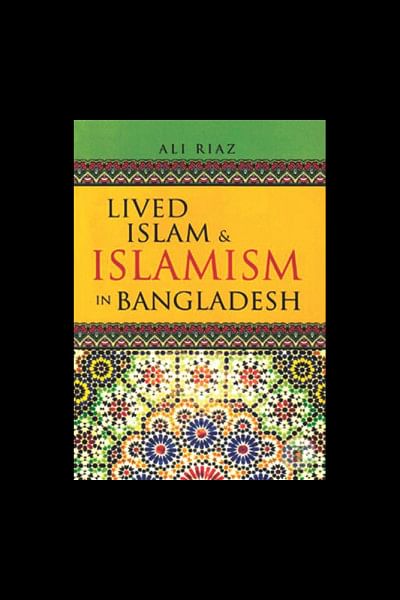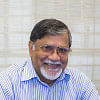Contextualising Islam, the social and the political

The issue of Islam in Bangladesh is complex, sensitive and fraught. It has problematised the sense of national identity of Bangladeshis into a schizophrenic duality driven by the tension between the cultural and religious aspects of their collective personality. It has complicated Bangladeshis' understanding and writing of history, and has even shadowed their judgments regarding relationships with other nations.
But this ambiguity about, often this "conflict" between, faith and culture, or between the sacred and the secular, is most acutely expressed in the domestic political sphere. Politicians are usually a bit coy when they address this issue (none can actually speak against the primacy of religion in the lives of the people, nor can anyone explicitly dismiss the cultural markers that define them), but the fault lines remain deep, confusing and slippery.
Indeed, they have been exacerbated because of divisions within the worldwide Islamic ummah, the tendencies towards dogmatism and fundamentalism that some Muslims have embraced leading to intolerance, turmoil and violence in various places, and the globalisation of political Islam in ways that are unprecedented, and only dimly understood.
In Bangladesh, this process has been further intensified through some internal developments. First, there are controversies about the role of Islamists during the war of liberation in 1971, and the subsequent trial and punishment of "war criminals" today.
Second, while many Islamist parties have not been allowed to register and have thus been disqualified from functioning in the political arena, there are concerns in some quarters about their visible impact in areas of individual speech, dress, and overt displays of religiosity, but also their non-visible (but consequential) influence in matters of public policy. Some examples of the latter include tinkering with school curricula, removal of the statue of Themis from the High Court premises, the building of hundreds of mosques under government auspices, the growing salience of religious schools and the official recognition of degrees granted by them, the passing of overly broad legislation against hurting anyone's religious sensibilities (which translates into a "chilling effect" on critical thinking and expressions of doubt), and so on.
" The "primary objective" of the book was to understand "the manifestation of Islam in daily lives and Islamist politics in contemporary Bangladesh" (p.3), and is predicated upon several relevant distinctions. For example, Riaz considers "Islamic" organisations as those involved in pietistic movements to encourage "religious revivalism as a mode of personal salvation"
Third, and perhaps most alarmingly, certain elements in Bangladesh appear to have developed some connections with international jihadi groups and there has been a marked rise of extremist militancy demonstrated through acts of terrorism and intimidation directed against foreigners, minorities and secular activists.
All of these have rudely unsettled previous assumptions about Islam's position and role in the country, and have opened up new sites of contestation, engagement and mediation. In his recent book Ali Riaz navigates through this tricky terrain with admirable insight, elegance and empirical mindfulness.
It is important to mention what this book is NOT about. It does not deal with the textual, ritual or theological aspects of Islam in Bangladesh, or the comparative distinctiveness of "Bengali Muslims". Nor does it explore the puzzles and ironies of regional history, currently the subject of lively debate, about how Islam became the religion of a majority of the people in this outlying province of India which was far removed from the seat of Islamic power (and thus generating questions about who, when, why, how many and under what circumstances the people here had converted to Islam).
The "primary objective" of the book was to understand "the manifestation of Islam in daily lives and Islamist politics in contemporary Bangladesh" (p.3), and is predicated upon several relevant distinctions. For example, Riaz considers "Islamic" organisations as those involved in pietistic movements to encourage "religious revivalism as a mode of personal salvation", and "Islamist" parties and programmes as those which perceive and present Islam as an"ideology with specific goals related to political and social changes" that they want to establish. Both may have transnational ties.
Along similar lines, he distinguishes between "political" and "social" Islam. The first is based on adherence to a rigid interpretation of scripture and the need to mobilise the believers to seek power and influence in order to implement those doctrinal imperatives. The second encompasses various daily "practices, institutions, and mindsets" of the faithful which are mostly non-judgmental, inclusive and culturally anchored. There are differences too between mainstream, radical or militant versions of the first, and various "poly-local" expressions of the second. His taxonomies and descriptions of these various strands within the ambit of Islam in Bangladesh, and his contention that lived Islam is not monolithic but contains a multiplicity of voices and affinities, are both astute and informed.
In other chapters of the book he refers to various survey data that indicate the evolution of thinking about the role of Islam in the lives of the Bangladeshi people. They are not time-series data and hence not strictly comparable, but these studies do suggest that the people's attitudes are dynamic and flexible, and have perhaps become more favourable to religion over time. He explores the electoral performance of mainstream Islamist parties and indicates and while the total votes garnered by all of them together have ranged between 14.4 percent in 1991 and 6.3 percent in 2008, they remain relevant players and have often emerged as "kingmakers" given the relatively even distribution of voter appeal enjoyed by the dominant political parties. In an intriguing (though a bit speculative and over-stated) chapter he suggests that the production of Islamic fiction, and the proliferation of women's religious discussion groups, indicates the gradual entry of religiously informed voices in the discursive landscape of the country, and refers to it as the gradual "Islamisation of the public sphere". Chapters on the content and context of madrasa education, the clash of demands and narratives reflected in the Shahbagh movement, and the identity and self-perception of violent "Islamist militants", are most commendable.
This is Riaz's third book on a related theme, and is a collection of essays written at different times, and perhaps for diverse audiences. Thus, some unevenness and repetitiveness may be expected. However, most of the essays included here bear evidence of extensive research, careful analysis, and clarity of exposition. Ali Riaz has gradually established himself as one of the most respected and productive scholars and commentators writing about Bangladesh politics and society today. This book provides testimony, once again, that his reputation is eminently justified.
Lived Islam and Islamism in Bangladesh
By Ali Riaz
Prothoma Prakashan, 2017
Ahrar Ahmad is the Director-General of Gyantapas Abdur Razzaq Foundation and can be reached at [email protected]





Comments